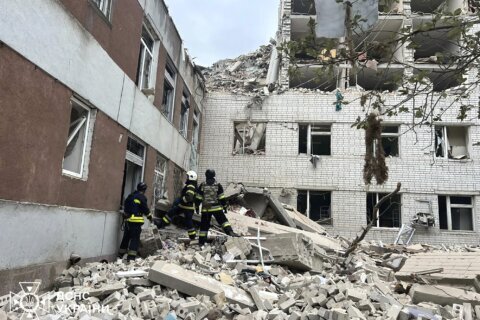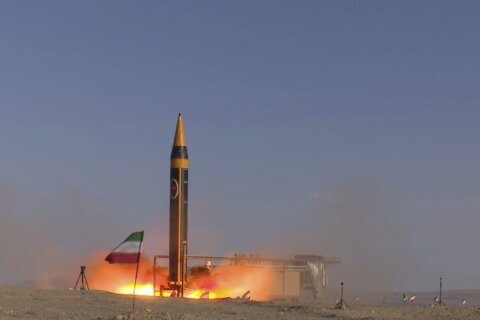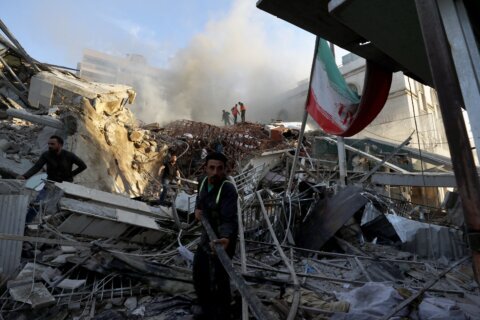WASHINGTON — In the days leading up to the collapse of the Islamic State of Iraq and the Levant’s (ISIL) operations in Manbij, Syria, U.S. military personnel observed hundreds of vehicles containing ISIL fighters leaving — and they let them go.
The decision, according to U.S. Army Colonel Christopher Garver, spokesman for Operation Inherent Resolve, was made by commanders on the ground and by the coalition, “to protect civilians.”
But there was another objective — to follow the fighters and possibly target them again.
“Because we didn’t pull the trigger doesn’t mean we’re not still tracking those individuals and paying attention. We’re still able to follow those individuals,” said Garver.
He would not elaborate on how the fighters are being tracked or the status of the operation, but confirmed that, “we have not lost contact with those individuals yet.”
Manbij is a strategic location for both ISIL and the U.S. led coalition.
The coalition wrestled the Tishrin Dam away from ISIL in late 2015, crossed the Euphrates River and seized the town of Tishrin and other nearby areas. That operation cleared the way for the Manbij offensive, which culminated on Aug. 13, with hundreds of vehicles leaving the city loaded with fighters and civilians used as human shields.
Still, the operation has been hailed as a resounding success by U.S. military officials and their Syrian partners. They say it is central to the objective of increasing pressure on ISIL.
“You’re talking about several thousand ISIL fighters that were killed or captured and more than 45,000 civilians that we were able to liberate,” said Garver.
While congratulating the people of Manbij, the Manbij Military Council, the Syrian Arab Coalition and the Syrian Democratic Forces on the successful operation, U.S. Secretary of Defense Ashton Carter said in a statement, “Manbij city was a key transit point for ISIL fighters going into both Syria and Iraq, and for its external operators plotting attacks against our allies, our partners, and our homeland.”
“The success in Manbij city will also help reinforce the growing isolation of Raqqa and enable us to achieve the next objective of our campaign in Syria – collapsing ISIL’s control over that city,” Carter elaborated.
Forcing ISIL out of Manbij exposed the crumbling terror group and provided an opportunity to see where they scattered to.
“Our pilots and strike authorities were watching that situation and what we saw were a large group of vehicles, filled with what looked like civilians intermixed in every vehicle, as they were trying to escape from Manbij,” said Garver.
The exodus, it seems, was the practical application of a lesson learned two months ago in the battle of Fallujah in June. Based on the drubbing ISIL forces took at the hands of the coalition, U.S. military officials believe the terror group tried to adjust its escape techniques in Manbij.
“We saw ISIL forces gathering in convoys and trying to escape to the west, back into ISIL territory, and we were able to destroy those convoys, inflicting a significant amount of damage to ISIL, which they in their own words described as a ‘disaster,'” Garver said in the Fallujah exit.
He said the decision was made to “fill their vehicles with civilians to prevent us from being able to strike those convoys as they were escaping Manbij.”
Intelligence sources tell WTOP the fighters’ convoy headed north towards Turkey.
The defeat for ISIL in Manbij is the latest in a succession of crushing defeats.
“Thus far, the coalition has flown over 90,000 sorties conducting 14,000 coalition air strikes in Iraq and Syria. We’ve also trained 30,000 Iraqi security personnel,” said U.S. National Security Council spokesman Ned Price.
As a result of the withering campaign, Price said, “the Iraqis have reclaimed nearly 50 percent of populated territory that ISIL once held. In Syria, ISIL has been rolled back from nearly 25 percent of the territory they previously controlled.”
Also, ISIL’s fighting force has been sliced in half. “The intelligence estimate that we use, still says between 19,000 and 25,000 fighters in ISIL. And that’s an older figure. We certainly we think we have killed somewhere around 25,000,” said Garver.
Additionally, he said the foreign fighter flow has slowed “from 2,000 each month into Syria, to 200 to 500 per month.”
ISIL has lost territory and fighters, and its income from illicit oil operations has been cut in half. From the $30 million dollars a month it generated two years ago, income has fallen to approximately $15 million a month, according to Garver.
Several U.S. military and intelligence sources suggest ISIL’s fighters are becoming progressively disillusioned.
Not only is the crumbing of the so-called caliphate and successive defeats taking a toll, but the fighters’ salaries have been continuously slashed as coalition air strikes have destroyed, according to Garver, at least a half billion U.S. dollars’ worth of money–much of which was used to pay them.








